Seasons – Spring 2017
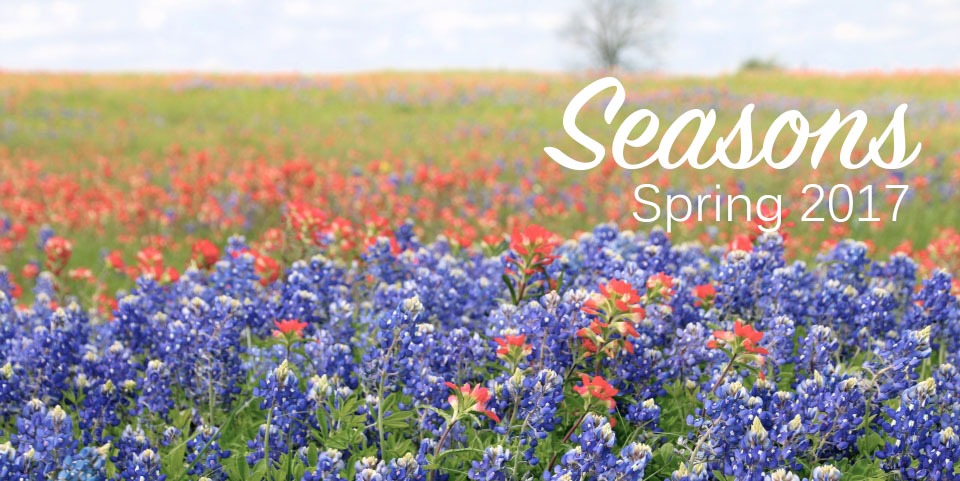
From the Plateau Land & Wildlife Management Team,
Our clocks have sprung forward, the birds are singing, wildlife is coming out of hibernation and the plants are coming back to life. Spring is officially here. Although this winter has been rather warm, we would be lying if we said we weren’t excited for more sunlight, blooming greenery and all the little flutters of life that we enjoy so much during this time of year. This issue of Seasons captures much of the excitement of the season and we hope it inspires you to get out and enjoy your land during this beautiful time of the year.
We see spring as a fresh start to think about what you envision for your land this year. Now is a great time to start putting out water tables, wildlife feeders, cleaning out nest boxes, conducting bird surveys & control any unwanted pests on your property. All of these activities can help set you up for the remainder of 2017 and the years to come.
In this issue, we will cover what it means to be successful in wildlife management, a checklist of activities perfect for springtime, what’s happening with the law and feral hogs, and questions you should ask when purchasing rural land.
We hope this issue of seasons excites you about this special time of year and the year to come. And as always, if there’s anything Plateau can do to help you protect, enhance or better enjoy your land just give us a call. We’ll be here when you need us.
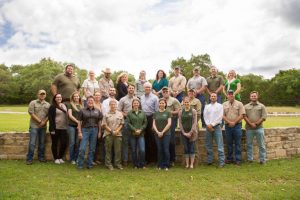 Until next season and Seasons,
Until next season and Seasons,
The Plateau Team
Table of Contents
The Children are our Future
Unforeseen Success in Wildlife Management
Spring Wildlife Management Activities Check List
Birding the Valley
Introducing Nick Fisher & Alec King
Feral Hog Control
Service Spotlight: Imported Red Fire Ant Treatment
Questions to Ask When Purchasing Rural Property
The Children are our Future
By Shane Kiefer, Director of Ecological Services
I believe the children are our future
Teach them well and let them lead the way
While Whitney Houston was singing about human children in her song, her words are true for wildlife and all other living things on this planet. While many people may never think about it, this includes trees. Trees are large and often long-lived organisms, which makes it easy to overlook the importance of young trees as the future generation, especially on the short time scales (years or decades) on which we tend to think and plan. A large oak tree on your property that may live a few hundred years will outlast you and possibly your children and grandchildren, so why worry about the offspring it may produce.
This issue of differing time scales is common in ecology and land stewardship. It is one that Plateau hopes to help landowners consider when making decisions about their properties. To that end, I want to share an example of such an encounter I had recently in Hays County.
While conducting a site visit recently, a landowner was lamenting the loss of some large Texas oaks to disease and drought. As a listened, I noticed an excellent opportunity to illustrate a phenomenon that is all too uncommon in the Edwards Plateau. Not the death of trees, which is common and expected, but the resulting rebirth of this piece of the woodland.
You see, this property was unique in that, despite being small, it had been high-fenced for a few decades. The oaks had died only a few years prior and already numerous young Texas oaks were rushing to fill the canopy under each dead parent tree. They had been present beneath the shade of the large trees, waiting for the opportunity that would eventually come. Stimulated by abundant sunlight and nourished by the relatively fertile soil beneath the now-empty canopy, they reached quickly skyward, growing at a tremendous rate to take the place of the old generation. As we walked the property, we noticed oak seedlings and saplings everywhere along the hillside beneath the shady canopy, not to mention an abundance of shrubs that normally occur in more limited quantities on Hill Country properties.
Why is this so noteworthy? The high-fence is the key. This property was high-fenced to keep white-tailed deer out, not in. The complete absence of deer had provided a perfect nursery for young Texas oaks, elms, and other deciduous hardwoods, which are like highly nutritious ice cream to deer. If ice cream was actually nutritious, wouldn’t you eat all you could? My two daughters say, “YES”, though I suspect the nutrition aspect is irrelevant in their minds.
We’ve worked on thousands of properties over the last 20 years, and this phenomenon is worth noting because it is so hard to find. That doesn’t mean oaks aren’t reproducing. They certainly are, but they are not recruiting young trees for the next generation. You can see baby seedling oaks on most any property every spring, but finding a “teenage” Texas oak is often hard to do because those seedlings get eaten by deer.
Most of you are aware that there are lots of deer in the Edwards Plateau. I’m a big fan of deer, but too many deer have negative impacts on habitat, and that affects other wildlife (songbirds, butterflies, etc.) that I enjoy as well. And those impacts extend beyond their lifetimes and ours when they consume every young Texas oak that sprouts, leaving none to replace the current generation when it inevitably succumbs to old age, drought, or disease.
If you walk through the woods and see no head-high oaks, hackberries, cherry trees, or walnuts, imagine how long it will take to recover if oak wilt, drought, or another natural, destructive agent strikes. Consider the future and continue working to improve the health of your land to ensure that even if disaster strikes, your land will recover and continue to provide quality wildlife habitat and enjoyment for your children and theirs.
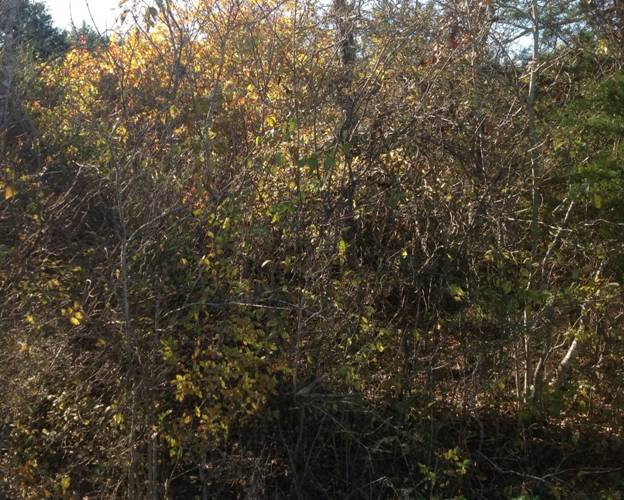
An abundance of head-high Texas oaks race for the sky in an opening created by the death of an adult tree.
Unforeseen Success in Wildlife Management
By James Hall, Staff Biologist II
One of the most challenging aspects of land stewardship is the measurement of success. Does one find success through the proliferation of game bird populations, production of larger antler mass on resident bucks, establishment of native grasses, or improved spring flow? These goals can all be accomplished on individual properties through land and wildlife management practices. However, what are the less tangible effects observed not just on a single ranch, but on the landscape-scale where they can be felt across the state? Recently, the fate of two species in the state of Texas have been heatedly debated – the Golden-cheeked Warbler and the Black-capped Vireo. The plight of these birds demonstrates the success of wildlife management and conservation efforts, but also the uncertainty of when a goal has been successfully met.
In June of 2015, a petition was submitted by former state Comptroller Susan Combs and other groups stating that the Golden-cheeked Warbler, a neo-tropical songbird that nests only in central Texas, should be delisted from protection under the Endangered Species Act (ESA). More recently, in early March 2017, Texas Land Commissioner George P. Bush announced he is prepared to sue the federal government over the removal of the warbler from the endangered species list. The Combs petition and this new announcement from the Texas General Land Office where Bush is the Commissioner, are based on a study conducted by Texas A&M which purported that the warbler population was much larger than previously estimated, and supports delisting of the species. Additionally, both arguments stated that to delist a species is the ESA’s definitive goal. In other words, the potential delisting of the Golden-cheeked Warbler should be heralded as a success story for conservation, not maligned as a developer land-grab. In June of 2016, the U.S. Fish and Wildlife Service (USFWS) rejected the Susan Comb’s petition. The USFWS and other groups ultimately found flaws in the Texas A&M methodology that claimed such a large population size and recognized that habitat loss and other threats to the species remain a concern. Further action from the Texas General Land Office is pending. However, regardless of partisanship on this issue, few could argue against celebrating the delisting of an endangered plant or animal, especially if populations were robust and viable.
A more recent success story worthy of potential celebration is of the Black-capped Vireo. On December 14th, 2016, the USFWS announced that after 30 years of conservation efforts, the endangered vireo is now proposed for delisting. Much like the Golden-cheeked Warbler, the Black-capped Vireo has near exclusivity to Texas where most of its breeding range exists, along with portions of southern Oklahoma and northern Mexico. Once nearly extinct, the bird is no longer recognized as endangered. Though official delisting is pending, this illustrates the absolute success of conservation efforts under the ESA.
Critical to this story are the endeavors of private land owners, who alongside government and environmental groups, have for decades trapped Brown-headed Cowbirds, a bird that once migrated the Great Plains alongside the American bison. Now associated with domestic cattle and in a much larger and more static range, cowbirds lay their eggs in songbird nests, resulting in the unsuspecting bird, such as a vireo, raising the cowbird chicks to the detriment of their own young.
Undoubtedly attributed to the recovery of the Black-capped Vireo is the reduction of goat ranching in central Texas. Grazing and browsing livestock such as goats thinned out much of the shrubby habitat that vireos prefer, especially in rocky uplands of the Edwards Plateau and Cross Timbers, where such agricultural practices are unsustainable. Over time, ranchlands situated inadvertently in historic vireo ranges adapted their management strategies in favor of sustainability. By reducing stocking rates and finding encouragement to implement periodic disturbance methods such as prescribed burns and selective brush management, vireo habitat was improved. Additionally, the advent of the wildlife management valuation (1-d-1w wildlife management use appraisal) allowed for long-time ranchers and new landowners alike to relieve their lands of the grazing burden and manage specifically for both game and non-game species. Many of these aforementioned activities such as cowbird trapping and selective brush control are actually a part of the wildlife management strategy, and one of many activities landowners may adopt to achieve and comply with the wildlife management valuation. These long-term shifts in stewardship resulted in the landscape-scale approach to conservation, possibly somewhat unknowingly by the individual landowner. Coupled with tireless efforts of city, county, state, and federal agencies, as well as the sizable land trust community, the resulting effects were felt across the miles of once over-utilized lands critical to wildlife species such as the vireo.
While the delisting may allow some of the government funds and resources to be allocated towards other programs, there may yet be some backlash to full delisting and protection of the vireo will still be ongoing. Many of the activities used to manage vireos will not cease simply because of the reduced protections on habitat. Trapping to reduce cowbird abundance and predation will continue to be conducted to propagate other songbird species (including the Golden-cheeked Warbler). Similarly, brush manipulation and controlled disturbances are popular methods to increase habitat for the Northern Bobwhite quail, a renowned species in Texas.
There are also still expansive preserves in place to provide actively-managed vireo habitat, including the Balcones Canyonlands Preserve in western Travis county and the Balcones Canyonlands National Wildlife Refuge in Burnet, Williamson, and Travis counties. These are enormous tracts of open space that serve to compensate for lost habitat in other regions. They also act as a preserve for the Golden-cheeked Warbler, a species not deemed ready to be removed from the endangered list, but one that utilizes habitat beneficial for a wide variety of other species. Properties being managed under the wildlife valuation will also likely continue to increase, contributing to the preservation of biodiversity in the state.
In the next few months, the USFWS will take public comments on the vireo delisting proposal, and by next December a final determination will be made. In regards to the warbler, action from the Texas General Land Office may soon be observed as well. Regardless of these decisions, the value of proper land stewardship by private landowners and the success of the wildlife management valuation are self-evident. The recovery of the Black-capped Vireo may become a positive end to a saga that most imperiled species do not seem to reach.
Back to TopBack to Top
Spring 2016 Wildlife Management Activities Check List
By Kameron Bain, Business Development Manager
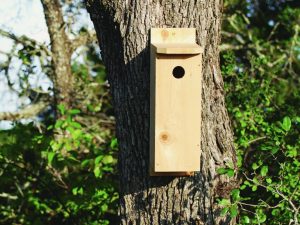 Spring is here! Although we’ve had a warm winter and a head start on spring weather, the earth is beginning to wake up and come back to life more each day. With the grass greener, the trees blooming and all our favorite creatures starting to reappear, there will be a lot of fun wildlife management activities to check off your list in spring. With longer days and enjoyable temperatures, spring is one of the best times of year to complete some of your wildlife management to-dos!
Spring is here! Although we’ve had a warm winter and a head start on spring weather, the earth is beginning to wake up and come back to life more each day. With the grass greener, the trees blooming and all our favorite creatures starting to reappear, there will be a lot of fun wildlife management activities to check off your list in spring. With longer days and enjoyable temperatures, spring is one of the best times of year to complete some of your wildlife management to-dos!
- Nest Boxes & Supplemental Shelter – The spring birds are starting to arrive so you need to clean out your nest boxes ASAP
- Predator Control
- IRFA – It is predicted that imported red fire ants will be very active this spring
- Brown-headed cowbirds during breeding bird season
- Erosion Control
- Supplemental water
- Spring Census Breeding Bird Census
- Re-Seeding native grasses
Birding the Valley
By Kyndal Anderson, Staff Biologist
This January, Plateau biologist Mark Gray and I were fortunate enough to attend the Texas Ornithological Society’s annual winter meeting held in McAllen, which is nestled in the heart of the Rio Grande Valley. This three-day birding adventure provided the opportunity to visit the unique eco-region and tropical climate, which forms the backbone of one of the most prominent birding hot spots in the state of Texas.
Personally, this was my first trip to The Valley to bird and I quickly discovered why it was viewed in such a good light by other birders. For someone who is relatively new to bird watching like me, birding the Rio Grande Valley may feel like a roller coaster ride to seeing “life birds.” The riparian ribbon that is formed by the Rio Grande River seems to be lined with an endless number of well-maintained parks and natural areas that are teeming with a wide variety of bird species including hummingbirds, orioles, thrashers, waterfowl, shorebirds, wading birds, hawks, parrots and parakeets, warblers, vireos, sparrows, flycatchers, woodpeckers, and so much more.
Some highlights of the trip included: Plain Chachalaca, Burrowing Owl, White-tipped Dove Common Pauraque, Buff-bellied Hummingbird, Gray Hawk, Green Jay, Great Kiskadee, Black Phoebe, Tropical Kingbird, Clay-colored Thrush, and Altamira Oriole. One bird, however, topped the charts for Mark and me.
The rare, Rose-throated Becard had been seen on and off for the duration of the trip at Estero Llano Grande State Park. Mark and I were lucky enough to have a long, close look at the Becard on a short visit to the park before heading back home and it was certainly the most cherished memory I’ve carried back with me. We both had a wonderful trip and were very happy to have attended another TOS meeting. For those of you interested, the spring meeting will be held in Rockport in early May. Hope to see some of you there!
Back to TopBack to Top
Introducing Nick Fisher & Alec King
By James Hall, Staff Biologist II
Nick Fisher and Alec King are Plateau’s newest Wildlife Technicians. Nick is based in the Dripping Springs region while Alec will be based in our Hill Country South region.
Nick Fisher
Nick grew up in the Lost Pines area with an ever-growing interest in wildlife and the outdoors. From a young age he knew he wanted to have a career that would immerse him in the outdoors, thus he continued his education studying Wildlife Biology at Texas State University. During school, Nick interned for Texas Parks & Wildlife at the McGillivray and Leona McKie Muse Wildlife Management area in Brownwood conducting herpetological surveys.
Nick’s nine years of customer service experience makes working with people and going out of his way to provide a service second nature. Combining that with a knowledge of and passion for wildlife has made his transition into his role at Plateau a seamless one.
Nick is currently working towards his application for his Associate Wildlife Biologist Certificate and would like to continue his education in wildlife biology in the future. Nick’s interests in wildlife management go beyond self-enjoyment. His 10-month old son also finds pleasure in the outdoors as much as he does, and he aspires to preserve the natural world for future generations to come.
Alec King
Alec was born and raised in Round Rock and has spent most of his life in central Texas. From the Guadalupe Mountains to Davy Crockett National Forest, hiking and camping around the state has given Alec a passion for wildlife and the conservation of Texas landscapes. He spent his time as an undergraduate at Texas Tech University where he received a B.S. in Natural Resource Management with an emphasis in conservation.
While earning his degree, Alec helped to manage a 3000-acre ranch in west Texas. He most recently worked as a research technician on projects studying bat interactions with wind turbines and collecting habitat data for migrating waterfowl. Alec is excited to provide his services to local landowners so that they can reach their wildlife management goals and help in preserving native Texas ecology.
Back to TopBack to Top
Feral Hog Control
Questions about Feral Hog Toxicants by David Riley, Staff Biologist
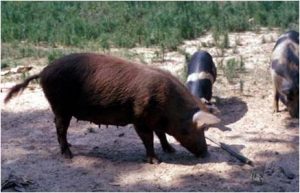 Feral hogs (Sus scrofa) are the most prolific non-native wild animal found in Texas. Recent studies show that there are 1.8-2.6 million feral hogs that call Texas their home, with numbers growing at an astonishing rate. Feral hogs cause upward of $52 million dollars in damage every year, and many landowners have accepted the fact that feral hogs are here to stay. That doesn’t mean that we as landowners can’t successfully control their numbers. Feral hog abatement methods have improved over the years, but as most landowners will agree, pig numbers just keep increasing. Recent studies by Texas Agrilife Extension have shown that Texas is not harvesting nearly enough hogs to stabilize the population. Additional studies show that at least 70% of the population needs to be harvested on an annual basis to stall feral hog population growth, and as of right now Texas harvests approximately 25-30% of the population annually. This falls drastically below the necessary harvest.
Feral hogs (Sus scrofa) are the most prolific non-native wild animal found in Texas. Recent studies show that there are 1.8-2.6 million feral hogs that call Texas their home, with numbers growing at an astonishing rate. Feral hogs cause upward of $52 million dollars in damage every year, and many landowners have accepted the fact that feral hogs are here to stay. That doesn’t mean that we as landowners can’t successfully control their numbers. Feral hog abatement methods have improved over the years, but as most landowners will agree, pig numbers just keep increasing. Recent studies by Texas Agrilife Extension have shown that Texas is not harvesting nearly enough hogs to stabilize the population. Additional studies show that at least 70% of the population needs to be harvested on an annual basis to stall feral hog population growth, and as of right now Texas harvests approximately 25-30% of the population annually. This falls drastically below the necessary harvest.
How do we control feral hogs? This is the million dollar question for landowners throughout the state. Control methods such as box traps, snares, and strategic shooting have proven to be successful at reducing local populations, but have failed to reduce overall numbers to a more manageable level. Several factors contribute to this such as poor trapping success and lack of trapping days. A feral hog toxicant called sodium nitrite is being extensively studied as a way for landowners to successfully control large populations of feral hogs, but it is still a few years away from approval in the United States. Plateau has been carefully following the development of sodium nitrite baits for several years as it goes through the necessary testing.
Another commercial, warfarin-based feral hog toxicant, Kaput, was recently approved for general use by the EPA and as a state-limited-use pesticide by the Texas Agriculture Commissioner, Sid Miller. Warfarin is a blood thinner that is used as a medication for humans as well as rat poison. The rule change by Commissioner Miller would allow it to be used throughout the state of Texas to aid in feral hog control, though serious concerns have been raised by hunters, biologists, and landowner groups.
Questions have been raised about the safety of this toxicant to other wildlife and humans. Questions such as, how to deliver the bait without harming other native Texas wildlife, effects on scavenger species that may feed on carcasses of warfarin-exposed hogs or other non-target species, and how the use can affect humans. Strict regulations have been placed on the use of Kaput, but some of the label recommendations are concerning.
The label specifically mentions that the “product may be toxic to fish, birds, and other wildlife…”and requires that applicators monitor the baiting site every 1-4 days and collect any spilled bait for disposal. This is worrisome since spilled bait is inevitable and will likely be consumed by non-target wildlife species, including mammals and possibly birds. Applicators are also required to monitor the “treatment site” four days after the first bait placement and every 2-4 days thereafter to locate deceased feral hogs or other non-target species. These carcasses are to be buried at the treatment site at least 18 inches below the surface or otherwise disposed of to prevent scavenging. This requirement may be impractical at best, because feral hogs will likely not remain at the treatment site after bait consumption and may travel long distances throughout the property or to neighboring properties before death occurs up to several days later. If dead feral hogs or other non-target species are not located the potential for secondary consumption by scavenger species becomes a real risk.
Not only is there a risk to native Texas wildlife, there are concerns about a risk to humans and businesses. Feral hog trapping and hunting is a large business in Texas and many landowners utilize feral hogs as a food resource. There is generally a low risk for human consumption of exposed hogs due to the blue stain that shows on the fat of hogs consuming Kaput. However, if it is allowed to be used throughout the state it may discourage landowners and meat processing businesses from utilizing traditional methods of feral hog removal because of the increased risk of harvesting a feral hog that may be inedible due to warfarin poisoning. This could be detrimental to feral hog control businesses, the meat processing industry, and Texas landowners.
The use of the warfarin-based product Kaput has many potential negative aspects that could affect native Texas wildlife, humans, and the industry that revolves around feral hogs. The greatest concern is what seems to be a lack of published data on the safety of warfarin and impacts to non-target wildlife species in rangeland applications. Others in Texas seem to agree since a Texas district court judge has suspended the rule that allows Kaput to be sold to licensed pesticide applicators until further research can be conducted on the impact of the poison on non-target wildlife species. It is important to mention that feral hog toxicants can be a useful tool in the control of feral hog populations, but by no means is it a “silver bullet.” Other research and new technologies will need to be developed to increase landowner success at removing feral hogs. Regardless of whether toxicants are used, an integrated, multi-level approach will likely always be necessary to reduce the negative impacts of feral hogs in Texas.
References from Timmons J., Higgenbotham B., Lopez R., Cathey JC, Mellish J., Griffin J., Sumrail A., Skow K., Feral Hog Population Growth, Density, and Harvest in Texas, 2012 Texas A&M Agrilife Extension Publication no. SP-472
Back to TopBack to Top
Service Spotlight: Imported Red Fire Ant Treatment
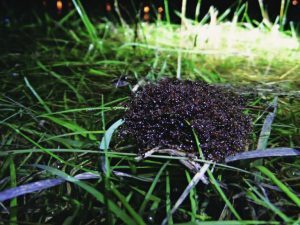 Plateau finds the key time for imported red fire ant (IRFA) control is now through June*, before the heat of summer hits. When the ants are hot (or cold) they go deep into the ground for temperature regulation and do not actively forage above ground. They also go deep during dry periods in order to find moisture, and come above ground during wet periods to avoid drowning. Why does IRFA control matter? The impact of imported red fire ants in the state of Texas is estimated to be $1.2 billion annually. These non-native ants are pests of urban, agricultural, and wildlife areas and can pose a serious health threat to plants and animals (Texas Imported Fire Ant Research Project). The ants can sting to death and consume any animal or insect that cannot defend itself including nestling birds and young animals, and the insects and other arthropods they eat are important forage resources for other wildlife.
Plateau finds the key time for imported red fire ant (IRFA) control is now through June*, before the heat of summer hits. When the ants are hot (or cold) they go deep into the ground for temperature regulation and do not actively forage above ground. They also go deep during dry periods in order to find moisture, and come above ground during wet periods to avoid drowning. Why does IRFA control matter? The impact of imported red fire ants in the state of Texas is estimated to be $1.2 billion annually. These non-native ants are pests of urban, agricultural, and wildlife areas and can pose a serious health threat to plants and animals (Texas Imported Fire Ant Research Project). The ants can sting to death and consume any animal or insect that cannot defend itself including nestling birds and young animals, and the insects and other arthropods they eat are important forage resources for other wildlife.
For more information on IRFA control, contact Plateau.
* Treatment starts up again in September after the heat of the summer and before the cold of winter.
Back to TopBack to Top
A Questions to Ask When Purchasing Rural Property
By Cassie Gresham, Attorney at Braun & Gresham, PLLC
Ask Questions When Purchasing Rural Land:
When you are buying a property with an open space valuation (i.e. agricultural, timber, wildlife or Ecolab) there are important questions to ask the seller. Many buyers and their agents treat the open space valuation as an afterthought. They just assume that the open space valuation is in place and don’t ask the right questions as part of the due diligence period. Here are ten questions that are essential to ask:
- What type of open space valuation do you have on your property?
- How long have you had an open space valuation on the property?
- Do you have an agricultural valuation on the property? If so, please provide me with a copy of your lease.
- Do you have a wildlife management valuation on the property? If so, please provide me with a copy of the wildlife management plan.
- When is the last time you applied for an open space valuation?
- Can you provide me with copies of your latest open space valuation application?
- Has the appraisal district inspected the property in the last couple of years?
- Has your open space valuation been denied in the last five years?
- What have you done in the last five years to maintain your open space valuation?
- Can you provide me with copies of any documentation of maintaining your open space valuation?
This may seem like over-kill – asking too many questions may destroy the deal. But, here’s why it is so important. A new buyer has to re-apply for their open space valuation and the form submitted to the appraisal district requires you to demonstrate how the property has been used for the past five years. So, if you don’t ask for the information as part of your due diligence and prior to closing, it may be difficult to provide the appraisal district with accurate information. Prior to closing, the seller is motivated to answer your questions and provide you with additional information. After closing, it’s your problem.
By asking questions, you may find out that the seller took the livestock off the property months ago to prepare it for sale and this could jeopardize the agricultural valuation. If a seller is leasing the property, then they may not know about the agricultural history of the property because someone else is taking care of it. You should ask to talk to their lessee so that you can understand how the property has been used for agriculture.
You should also call your local appraisal district and ask if they have any concerns about the property qualifying for an open space valuation. But, don’t take their word for it. Do your homework. For many buyers, the ability to continue an open space valuation on their new property is one of the major factors in deciding whether or not to purchase a property.
To learn more about the steps to take in purchasing rural real estate, please give Cassie Gresham a call at 512-894-5426.
Back to TopBack to Top






Sorry, the comment form is closed at this time.